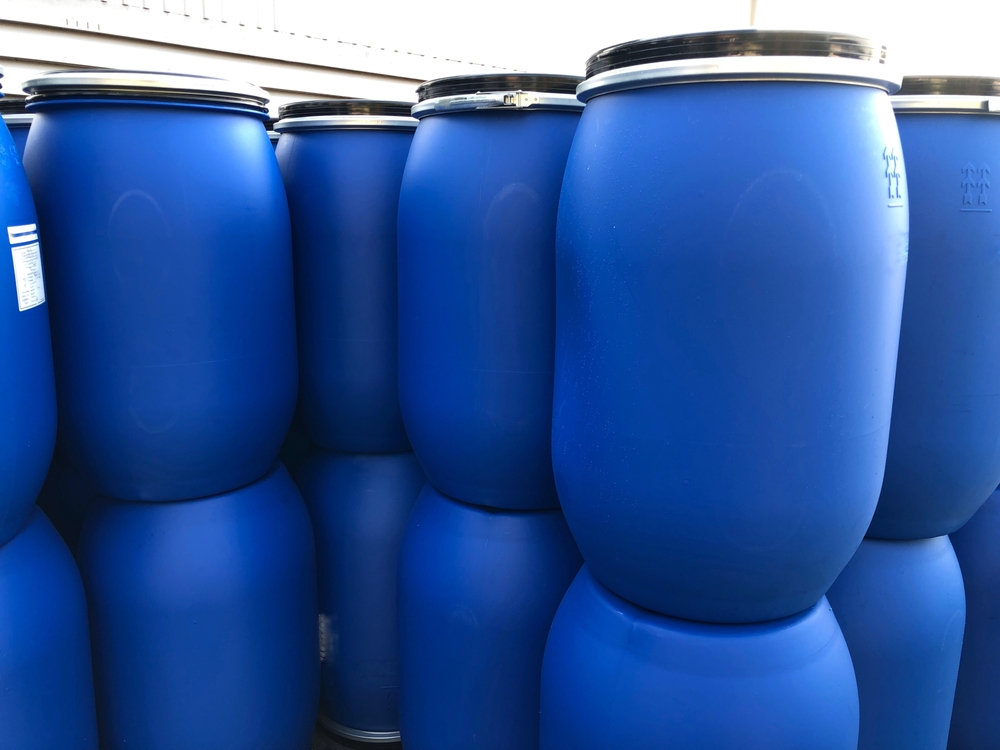S2K Commerce - Products Dropdown
Web Content Viewer
Preventing Outdoor Water Drums from Freezing

While it would be ideal for water to always be stored inside, where it isn't at risk of freezing or other risks during cold temperatures, this isn't always realistic in many buildings or facilities. Water supplies must often be kept outside in drums or other containers for emergency or related reasons, and for facilities who utilize this setup and operate in areas that get cold during winter, preventing any freezing risks in these storage areas is very important.
At Industrial Container and Supply Company, we're happy to offer a wide range of industrial drums for varying client needs, including water drums meant specifically for large-scale water storage. Why is water freezing a significant risk for any facility that keeps water stored outdoors in cold temperatures, and what are some options for avoiding these risks? Here are some basics.
Why Outdoor Water Storage Freezing is a Problem
Before we get into prevention methods, it's important to understand why outdoor water storage freezing is a problem. As temperatures drop, the liquid inside can begin to freeze and expand. This expansion affects both the water drum and any pipes or outlets leading up to it. In extreme cases, this can cause significant damage to the drums themselves, as well as whatever else happens to be connected in the area.
Just as importantly, many facilities that store water outdoors in this format are doing so primarily for emergency purposes, and any freezing could significantly reduce or even eliminate the amount of water available in case of an emergency.
Luckily, those managing such facilities have a number of options for stopping any freezing from happening within their drums. Here are some of the most commonly-used.
Consider Greenhouse Storage
For facilities where the amount of water stored isn't too large, a greenhouse structure can be a great choice. These are typically made from either glass or plastic to provide considerable insulation in cold temperatures while simultaneously allowing light inside, which is often beneficial for growing plants and other vegetation.
In many cases, your spatial setup will allow you to place drums inside such a greenhouse, giving you at least some protection from the cold temperatures. If you're worried about an emergency situation where certain features of this setup might be damaged or compromised in the event of an incident, consider setting up the whole structure on casters for easy moving in case it's ever needed.
Underground Storage
In other cases, particularly where the amount of water stored is fairly large, underground storage can be a great option. In this case, you'll store your drums inside an area that's been specifically built or dug out for the purposes of storage and protection from cold temperatures.
This setup can offer several advantages over more traditional outdoor setups — particularly when it comes to insulation. Not only will you be able to store larger amounts of water without worrying about freezing, but you'll also have an underground storage area that's easy to access in case of an emergency.
Steel Housing
Steel housing is another option for preventing outdoor water storage from freezing in cold temperatures. This method uses steel housings to store large amounts of water, providing a highly effective layer of insulation against the cold. In this system, multiple drums are stored inside a steel housing, which is designed to provide excellent insulation while still allowing easy access to the stored water in case of an emergency.
While this method might be a bit cost-prohibitive for some facilities, steel housing can offer a great long-term solution for those looking to store large amounts of water in cold temperatures.
Water Additives
While this will not be an acceptable option in some facilities due to sanitation or other concerns, some facilities choose to use water additives in order to prevent freezing. In this case, certain chemicals are added to the stored water in order to lower its freezing point and protect it against cold temperatures. There may also be cases where common additives like salt or alcohol can be used without impacting the usability of the stored water, but these are somewhat rare.
Insulation Materials
For those who store water in outdoor locations that periodically get below freezing, but don't actually spend too much time at or below this temperature level, insulation can often be the answer. Insulation materials like those used for residential and commercial heating systems can provide excellent protection from cold temperatures, particularly when placed around the drums themselves.
This is a great option for facilities that don't have access to greenhouse storage or steel housing solutions, as well as those who wish to supplement whatever other options they already use. For instance, a basic insulation blanket can do wonders for protecting your stored water from cold temperatures, and is a relatively low-cost solution that can be easily implemented.
In conclusion, there are several great options for ensuring outdoor water storage doesn't freeze in cold temperatures. Depending on your facility's particular needs and budget, you should be able to find a solution that will protect your stored water and ensure its safety even in the coldest of temperatures. With a little bit of research and planning, you can protect your outdoor water storage from freezing, no matter what winter brings.
For more on this, or to learn about our wide selection of water drums and other quality containers for varying clients, speak to our team at Industrial Container and Supply Company today.
